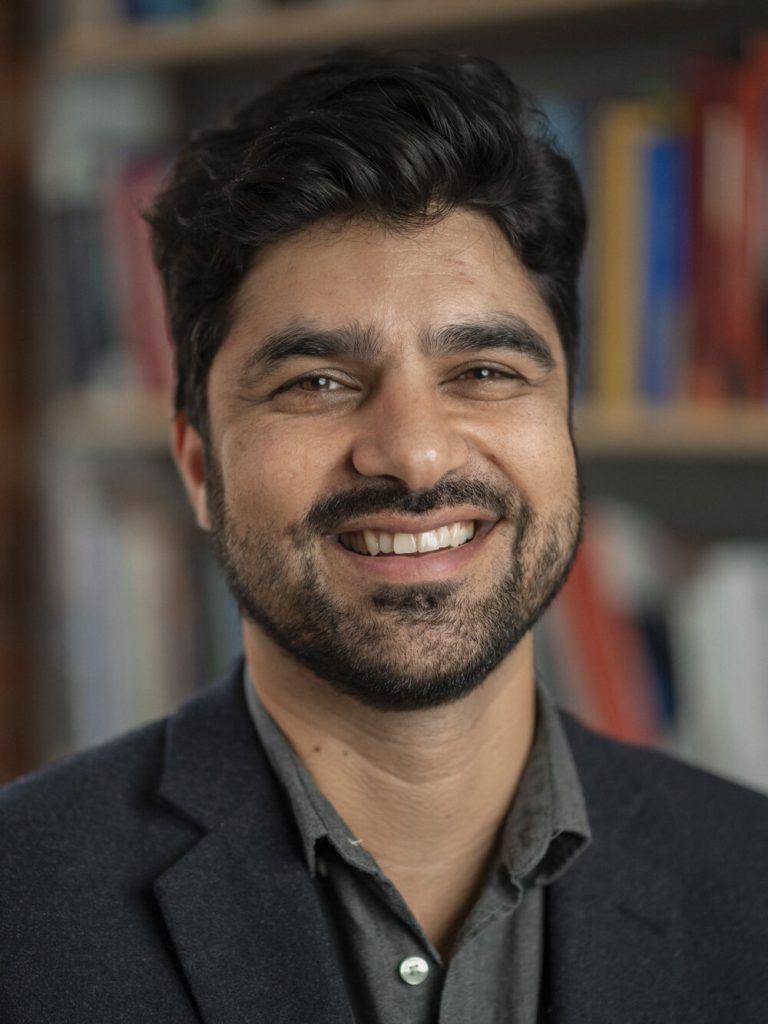Confirmed invited keynote lectures:
 |
Prof. Shervin Bagheri (KTH Royal Institute of Technology, Sweden) Professor Bagheri’s research focuses on the interaction between flowing fluids and complex materials with the objective to control/sense flows and transport phenomena. Shervin Bagheri received his PhD in Fluid Mechanics at Royal Institute of Technology (KTH) in Stockholm in 2010. In 2017, he was appointed as Wallenberg Academy Fellow and received the Future Research Leader award by Swedish Foundation for Strategic research (SSF). Since 2020, he is a member of the Young Academy of Sweden. In 2022, he received ERC Consolidator grant for studying lubricated surfaces in fluid flows.
|
Title: Turbulent skin friction and heat transfer control using surface lubrication
 |
Dr.Jeffrey Crouch (Boeing, USA) Jeffrey Crouch is a Senior Technical Fellow in Flight Sciences at The Boeing Company. After receiving his PhD in Engineering Mechanics from Virginia Tech in 1988, he was an Office of Naval Technology Postdoctoral Fellow at the Naval Research Laboratory, in Washington, DC. He joined Boeing in 1992. His work focuses on flow-physics modeling and control, including theoretical and computational studies, ground-based experiments, and flight testing. He is the technical leader for Boeing’s research and technology-development efforts in transition and laminar flow control, including natural laminar flow (NLF) applications on the 787, the 737MAX and the 777X aircraft. He is also the focal for wake-turbulence issues regarding the safe and efficient operation of aircraft, and is actively involved in transonic buffet research. He is a Fellow of the American Physical Society (APS), and an Associate Fellow of the American Institute of Aeronautics and Astronautics (AIAA). |
Title: Laminar Flow Control: An Enabler for Enhanced Vehicle Performance
Abstract
Environmentally motivated emissions targets are driving the need for greater performance enhancements beyond today’s highly-optimized commercial aircraft. One of the largest levers remaining to significantly reduce drag and fuel burn is laminar flow control (LFC). This boundary-layer control concept aims to delay the transition to turbulence by reducing the amplitudes of naturally-occurring instabilities. The talk will discuss the current state of LFC application to large commercial transports, and will consider the challenges of expanding the application of LFC for future aircraft. High-fidelity modeling of laminar-turbulent transition is one of the critical enablers for LFC. The talk will present an overview of current methods for transition prediction, and will highlight some recent progress aimed at aircraft applications.
 |
Prof.Bharath Ganapathisubramani (University of Southampton, UK) Bharathram Ganapathisubramani is Professor of Experimental Fluid Mechanics in the Department of Aeronautics & Astronautics at the University of Southampton. He completed his undergraduate degree at IIT Madras (1999) and his MS and PhD at the University of Minnesota (2004). He was a postdoctoral researcher at University of Texas at Austin (2004-2006) and a Lecturer at Imperial College London (2007-2010). He moved to Southampton as a Senior Lecturer in 2010 and became a Professor in 2012. He is an Associate Editor for Experiments in Fluids and Flow. He is an Associate Fellow of AIAA and a Fellow of Royal Aeronautical Society. His research interests are in turbulent shear flows and unsteady aerodynamics relevant to transportation and energy generation sectors. |
Title: Interaction between synthetic jets and turbulent boundary layers: Experiments and Models
Abstract
Synthetic jet (or zero mass-flux) actuators have been used in various flow control strategies ranging from separation control to reduction of skin-friction drag. In most of these applications, it is crucial to understand the interaction between the jet and the incoming turbulent boundary layer as well as model the trajectory of the jet in the cross-flow. In this talk, I will present some results where the interaction between a synthetic jet and turbulent boundary layers is examined in detail. Experiments are carried out to measure the flowfield and the evolution of the interaction with downstream distance is documented. The experimental data is then used to develop data-driven models that can be used to predict this interaction across a range of synthetic jet parameters. In addition to predicting some aspects of the interaction, these models also allow us to develop a further understanding of the interaction and to isolate the specific effects of the jet (such as viscous effect or vortical effect) on the boundary layer.
 |
Prof.Javier Jiménez (Universidad Politécnica de Madrid, Spain) Javier Jiménez received his Ph.D. in Applied Mathematics (1973) from the California Institute of Technology, Pasadena. He is currently an Emeritus research professor of Fluid Mechanics at the School of Aeronautics of the Polytechnic University of Madrid. Over the years he has collaborated with Ecole Polytechnique, Palaiseau, the Centre for Turbulence Research, Stanford University, the NASA Ames Res. Centre, and the IBM Madrid Scientific Centre. His research interests include: the physics of turbulence and hydrodynamic transition, numerical simulation and data-driven analysis of turbulence and combustion, vortex dynamics, computer graphics for the analysis of experimental results, flow at low Reynolds numbers, numerical simulation of transonic flows, turbulent mixing, digital image processing and its applications, and theory of nonlinear waves and resonance. He has been principal investigator of numerous research contracts, both institutional and industrial, including three consecutive Advanced Grants of the European Research Council. He is a member of the Spanish Royal Academy of Sciences and of the Spanish Royal Academy of Engineering. He is also an elected fellow of the American Physical Society, of the Institute of Physics of London and of the European Mechanics Society (Euromech). He received the research prize of the Spanish Royal Academy of Sciences in 1998, and the Fluid Mechanics prize of Euromech in 2018. |
Title: Ensemble and data-driven turbulence research
Abstract
Large-scale ‘unique’ simulations have been crucial for increasing our understanding of turbulence
dynamics, but they are expensive, often difficult to interpret, and tend to only be repeated a few
times. Recently, it has also become possible to run large ensembles of more moderate, but still
relevant, simulations, and single runs over very long times (thousands of turnovers). Both provide
very rich data sets, containing different information on the flow dynamics, which in both cases are
different from those of unique simulations. While the latter mostly provide mean values, low-order
moments, and statistics of particular structures that can easily be isolated, the former provide a
more unbiased view of the flow. Long data sets are good representations of turbulence ‘as it is’,
essentially statistical maps of the system attractor. However, because they depend on trajectories
naturally followed by the turbulent system, they contain little information on off-attractor
behaviour, and hence of possible control strategies. Ensembles, typically involving thousands of
interventional experiments, show turbulence ‘as it could be’ and provide information on causal
dynamics and possible control strategies. Examples will be discussed, including general and wall-
bounded turbulence.
|
|
Prof.Hajime Nakamura (National Defense Academy of Japan, Japan) Dr. Nakamura received his Doctor of Engineering from Tokyo Institute of Technology in 1997.He became a Research Associate at the National Defense Academy of Japan, and since 2011 has been a Full Professor in the Department of Mechanical Engineering at the National Defense Academy of Japan.His research field is heat transfer, primarily focusing on experimental studies of convective heat transfer.He received the Paper Award of Japan Society of Mechanical Engineers in 2019, and the Paper Award of Japan Society of Refrigerating and Air Conditioning Engineers in 2021, for his research on spatiotemporal measurement of heat transfer using infrared cameras. |
Title: Development of spatiotemporal heat transfer measurements in wall-bounded flows
Abstract
In this keynote speech, the development of a spatiotemporal heat transfer measurements using infrared thermography (IRT) will be introduced, which we have been engaged in so far. In particular, I will discuss in detail how to evaluate unattenuated heat transfer fluctuations from spatiotemporally attenuated temperature fluctuations on a heat transfer surface. In addition, as measurement examples, heat transfer characteristics in various flow fields will be introduced such as a flat plate turbulent boundary layer, separation/reattachment flow, turbulent pipe flow, sudden acceleration/deceleration flow, and swirling flow. Simultaneous measurements combined with PIV will also be introduced.

